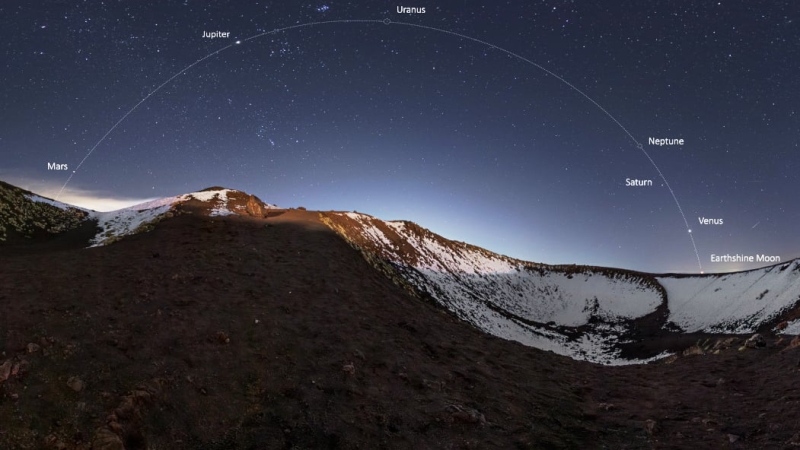Contents
NASA Astronomy Picture of the Day is a huge collection of astronomical images, both amateur and professional. It celebrates our amazing universe every day.
Since its inception in 1995, NASA APOD has been selecting and publishing some of the best images of space. Its two editors, Robert Nemiroff and Jerry Bonnell are the people behind it. Here, you can see images taken with space telescopes like Hubble, JWST, etc. But it also includes amateur images taken with regular DSLR cameras.
Here are some of the best images from January 2025.
Solar Analemma 2024
This year-spanning set of photos, taken in 2024, shows a trend in the seasonal drift of the Sun’s daily movement across the sky of the planet Earth. The figure-eight curve, which some refer to as an analemma, was only visible in exposures taken from Kayseri, Turkiye, at 1 pm local time on clear days. Naturally, the Sun was at the top and bottom of the curve on the days of the 2024 solstice. In the north, they coincide with the astronomical start of summer and winter. The 2024 equinoxes and the beginning of spring and autumn are marked by the points along the curve halfway between the solstices, but not by the figure-eight curve crossing point. Along the southern horizon of the 2024 timelapse skyscape are regional peaks including the dormant volcano Mount Erciyes.
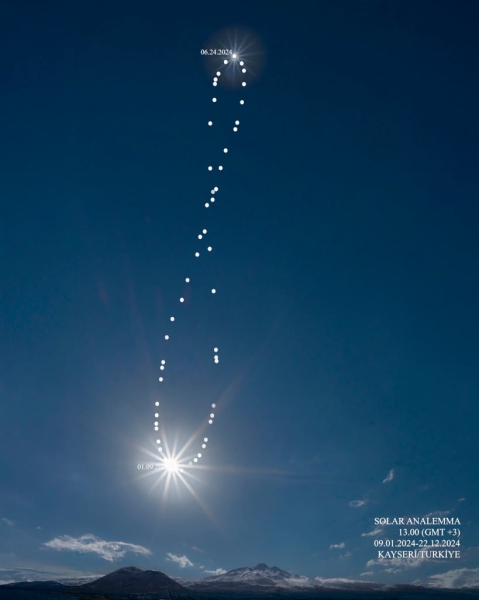
Image Credit & Copyright: Betul Turksoy via NASA APOD
Eclipse Pair
Eclipses typically occur in pairs. The Sun, Moon, and Earth can almost line up twice yearly during an eclipse season that lasts roughly 34 days. A lunar and a solar eclipse are then produced by the Moon’s new and full phases, which are separated by slightly over 14 days. In a single eclipse season, however, the alignment at both new moon and full moon phases is rarely close enough to generate a pair of solar and lunar eclipses that are both total (or total and annular). Partial eclipses typically occur during any eclipse season. This fortnightly split eclipse pair—a partial lunar eclipse on September 18 and an annular solar eclipse on October 2—was created during the final eclipse season of 2024. The time-lapse composite photos were taken from Rapa Nui planet Earth and Somerset, UK (left). There will be a complete lunar eclipse on March 14 and a partial solar eclipse on March 29, 2025, as well as a total lunar eclipse on September 8 and a partial solar eclipse on September 21.

Image Credit & Copyright: Josh Dury via NASA APOD
Colliding Spiral Galaxies from Webb and Hubble
Only one of these two galaxies will be left in billions of years. Until then, the spiral galaxies IC 2163 and NGC 2207 will gradually separate, producing streams of cast-away stars, lanes of black material, sheets of shocked gas, tides of matter, and star formation bursts. The highlighted picture in colors determined by science is a combination of Webb pictures in infrared light and Hubble exposures in visible light. Scientists believe that IC 2163, the smaller galaxy on the left, will eventually merge with NGC 2207, the larger galaxy on the right. The smaller galaxy is swinging counter-clockwise and is currently just behind the larger galaxy in the most recent encounter, which peaked around 40 million years ago. Stars in galaxies typically do not collide because of the great distance separating them.

Image Credit: NASA, ESA, CSA, STScI via NASA APOD
An Evening Sky Full of Planets
This early evening skyscape features a procession of planets from the Solar System, with only Mercury missing. Bright Mars is at the distant left, rising almost opposite the Sun. With the locations of the too-faint Uranus and Neptune noted close to the arcing trace of the ecliptic plane, one may also see the other planets that are visible to the naked eye: Jupiter, Saturn, and Venus. After sunset, a young crescent Moon with some earthshine on its surface may be seen on the far right, near the western horizon. The lower Silvestri Crater on Mount Etna represents the planet Earth in the foreground of the composite image taken on January 2. Naturally, for the entire month of January, planets are visible in the early evening skies over Earth. For skywatchers in the continental United States and Eastern Canada, a nearly full moon will appear to pass in front of Mars on January 13.

Image Credit & Copyright: Dario Giannobile via NASA APOD
Mimas: Small Moon with a Big Crater
It was almost devastated by whatever struck Mimas. What’s left is one of Saturn’s smallest spherical moons with one of the biggest impact craters. According to analysis, Mimas would have been destroyed in the event of a slightly greater impact. The massive crater, which is named Herschel after Sir William Herschel, who discovered Mimas in 1789, is featured here. It is roughly 130 km in length. The surface gravity produced by Mimas’ low mass is small enough to permit such comparatively extensive surface features yet strong enough to form a spherical shape. Mimas is appropriately characterized as a large, unclean snowball because it is primarily composed of water ice with a small amount of rock. The highlighted photo was captured in 2010 while the robot spacecraft Cassini was orbiting around Mimas, making it the closest flyover ever.

Image Credit: NASA, JPL-Caltech, Space Science Institute, Cassini via NASA APOD
Comet ATLAS Before Sunrise
Comet ATLAS is presently very near the Sun and very brilliant. One of the more impressive comet sightings of the past several years would be Comet C/2024 G3 (ATLAS) outside the Sun’s glare. It reflects roughly the same amount of sunlight to Earth that Comet Tsuchinshan-ATLAS did in October, and it is currently on par with the planet Venus. However, the enormous snowball is now so near the Sun that it is only visible in the early morning or early evening light. Comet ATLAS is currently at its closest point to the Sun, known as perihelion. There is hope that Comet ATLAS will survive its close approach to the Sun and continue to be visible to the naked eye for the next few days—and perhaps an excellent camera comet for weeks—although comet brightness predictions are notoriously difficult to make. Early yesterday morning, the above image was captured close to Tornaľa, Slovakia.
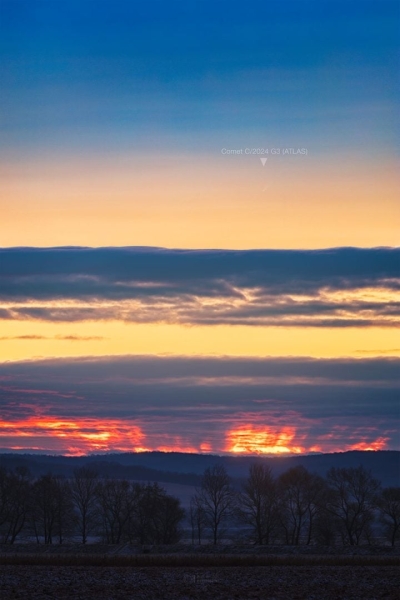
Image Credit & Copyright: Petr Horalek / Institute of Physics in Opava via NASA APOD
Wolf Moon Engulfs Mars
Does Mars ever get swallowed up by the Moon? Yes, but only in the sense that it occasionally moves ahead of you. However, from several places in western Africa and North America, this occurred only yesterday. In addition to the Moon being a fully illuminated Wolf Moon, this occultation was noteworthy because Mars was getting close to its largest and brightest, and it wouldn’t be until tomorrow that it would move to the opposition, which is the closest point in its orbit to Earth. Known more formally as an occultation, the engulfing usually lasts for almost one hour. Just when Earth’s greatest satellite was angularly shifting away from the far more distant red planet, the depicted image was captured from close to Chicago, Illinois, USA. Every now and then, our Moon passes in front of every planet in the Solar System. The next time our Moon eclipses Mars will be on February 9, which is not too far away given the orbital planes’ temporary alignment.
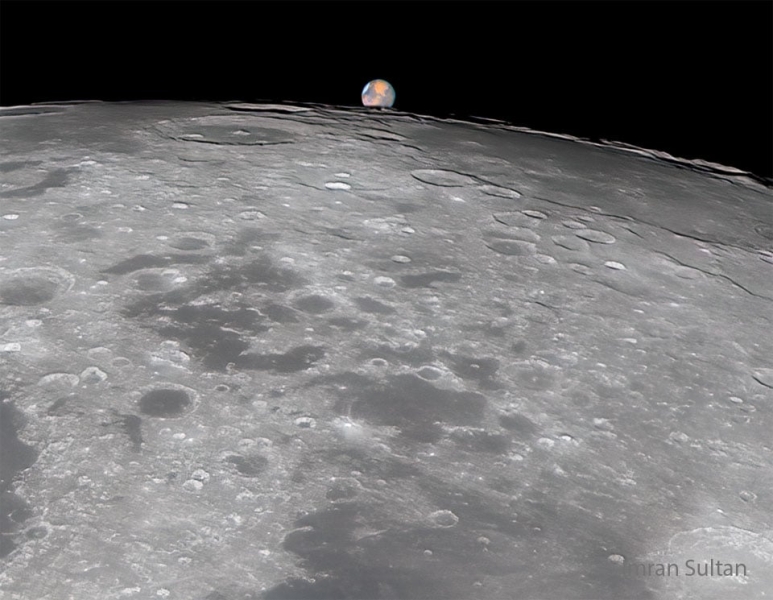
Image Credit & Copyright: Imran Sultan via NASA APOD
The North America Nebula
The North American nebula in the sky can generate stars, something that the North American continent on Earth is unable to do. In particular, the bright area that seems to be the east coast is the Cygnus Wall, a hot bed of gas, dust, and recently produced stars, similar to the Earth-confined continent. The star-forming wall is partially obscured by the dark dust that the bright young stars have produced, while it is illuminated and eroded in the main image. The region of the North America Nebula (NGC 7000) that is depicted extends over approximately 50 light years and is located 1,500 light years away from the Swan (Cygnus) constellation.
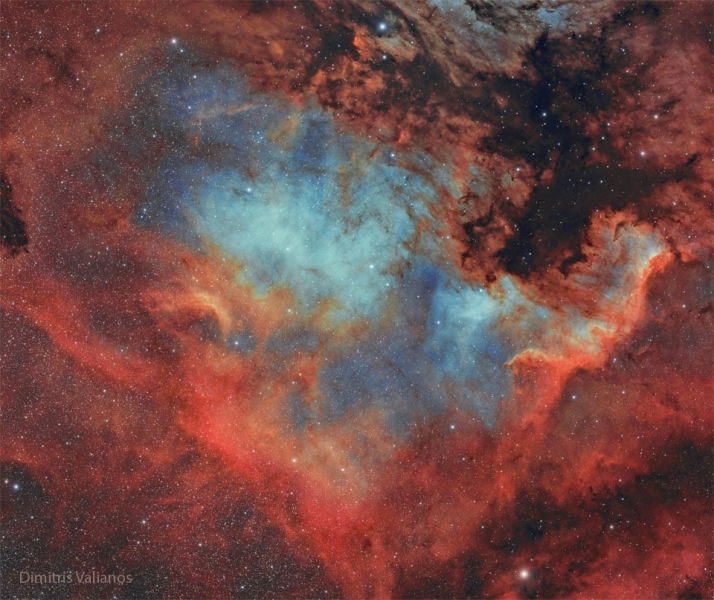
Image Credit & Copyright: Dimitris Valianos via NASA APOD
NGC 7814: Little Sombrero
You may locate this enormous expanse of Milky Way stars and far-off galaxies by pointing your telescope toward the high-flying constellation Pegasus. The acute area of vision that a full moon would nearly encompass is where NGC 7814 is centered. Because of its similarities to the brighter, more well-known M104, the Sombrero Galaxy, NGC 7814 is frequently referred to as the Little Sombrero. Sombrero and Little Sombrero are both edge-on spiral galaxies with core bulges and wide halos that are sliced by a thin disc with thinner dust lanes. In actuality, NGC 7814 is thought to be 60,000 light-years broad and 40 million light-years away.
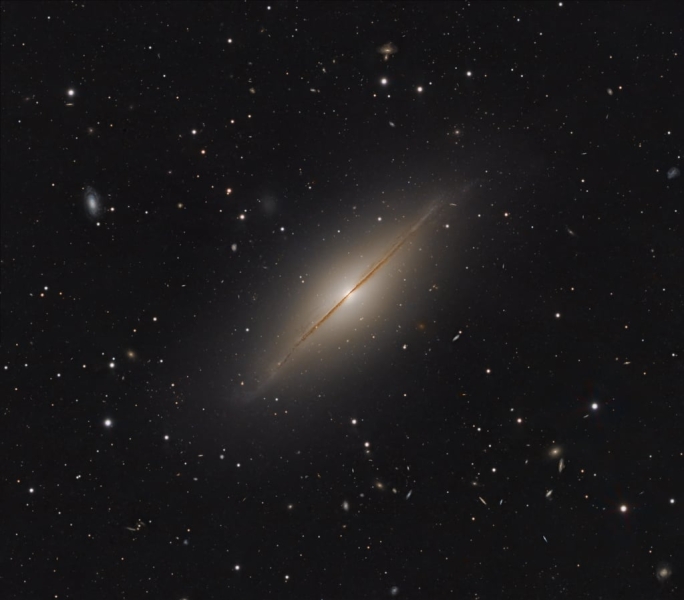
Image Credit & Copyright: Mike Selby via NASA APOD
The Variable Nebula NGC 2261
In as little as a few weeks, the interstellar cloud of gas and dust seen in this crisp telescopic image is observed to undergo a discernible shift in appearance. At the top of the fan-shaped nebula is the brilliant star R Monocerotis, which was discovered more than 200 years ago and is classified as NGC 2261. Astronomer Edwin Hubble studied NGC 2261, a mysterious cosmic cloud that is about one light-year wide and 2500 light-years away, early last century. Today, it is more well-known as Hubble’s Variable Nebula. So what causes the variations in Hubble’s nebula? The dusty reflection nebula that radiates from the star R Monocerotis makes up NGC 2261. According to the dominant variability hypothesis, changing shadows are cast across the dust clouds in the remainder of Hubble’s Variable Nebula by dense knots of obscuring dust that passes near R Mon.

Image Credit & Copyright: Tommy Lease (Denver Astronomical Society) via NASA APOD
If you have a space image, you can submit it to NASA APOD too.
For more incredible astrophotography photos, check our previous Breathtaking Astronomy Photos articles:
- Breathtaking Astrophotography Images – December 2024
- Breathtaking Astrophotography Images – November 2024
- Breathtaking Astrophotography Images – October 2024
- Breathtaking Astrophotography Images – September 2024
- Breathtaking Astrophotography Images – August 2024
Clear skies!
